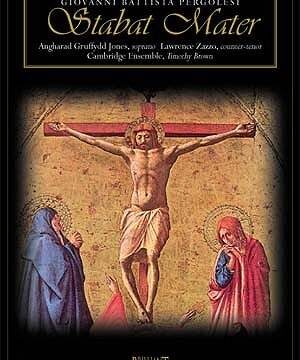 Composer: Forbidden
Composer: Forbidden
Works: Diptych (Homage to Brian Blanchflower) 1992, Dedica 1982, Forbidden Colours 1988, Violin Concerto 1986
Performers: Melbourne Symphony Orchestra, Gunther Schuller (conductor), Patrick Thomas (conductor), Jeffrey Crellin (oboe), Queensland Symphony Orchestra, Myer Fredman (conductor), Dene Olding (violin), John Hopkins (conductor)
Recording: Live at Merlyn Theatre, 23/05/92; Studio recording at Moorabbin Town Hall, 11/03/83; Live at ABC Studios Brisbane, 14/06/90; Live at ABC Studios Brisbane, 27/06/90
Label: VOX AUSTRALIS VAST 015-2
The album “Forbidden Colours,” featuring contemporary Australian orchestral works, serves as a compelling testament to the vibrant landscape of Australian classical music in the late 20th century. The composers represented—Roger Smalley, Riccardo Formosa, Gerard Brophy, and Bozidar Kos—are emblematic of a generation that sought to establish a unique musical voice, drawing upon their diverse backgrounds and experiences while remaining firmly engaged with the international avant-garde. This collection stands not only as a reflection of Australian artistry but also as a bridge connecting local traditions with broader global currents.
Smalley’s “Diptych,” a homage to painter Brian Blanchflower, is a standout piece that showcases a powerful orchestration that is both accessible and complex. The Melbourne Symphony Orchestra, under Gunther Schuller’s direction, navigates the intricate textures with finesse, allowing the work’s dramatic arc to unfold seamlessly. The piece is anchored by its vivid colors and dynamic contrasts, which emerge from Smalley’s earlier, more challenging compositions. The first movement’s vigorous activity contrasts sharply with the reflective second, highlighting Smalley’s ability to conjure emotional depth through orchestral color.
Riccardo Formosa’s “Dedica” features a substantial oboe part, beautifully executed by Jeffrey Crellin. The work, though rich in gesture, occasionally falters under the weight of its own ambition. Formosa, influenced by his background as a composer and producer, creates a tapestry of sound that feels overly elaborate at times, leading to moments where the sheer plethora of notes obscures the underlying thematic material. While the eight-minute duration does not overstay its welcome, it leaves one wishing for a tighter focus that could enhance its impact.
Gerard Brophy’s “Forbidden Colours” is notable for its exotic scoring and atmospheric qualities, presenting both a challenge and opportunity for interpretation. Myer Fredman’s conducting elicits a nuanced performance from the Queensland Symphony Orchestra, particularly in the delicate interplay between the oboe and percussion. The work expands into a rich textural landscape, although at just over eleven minutes, it risks tedium due to its repetitive ideas. The initial heat of the soundscape, likened to a shimmering desert, is compelling; however, the thematic material does not evolve sufficiently to justify its length.
Bozidar Kos’ Violin Concerto, with Dene Olding as the soloist, offers a virtuosic display that is both demanding and rewarding. The concerto’s atonal framework brims with tension, and Olding’s interpretation captures the work’s frenetic energy, particularly in the climactic moments leading up to the reflective coda. Kos, a composer steeped in both classical and jazz traditions, crafts a dialogue between the soloist and the orchestra that is both intimate and explosive. The engineering captures the rawness of the live performance beautifully, allowing the listener to experience the concerto’s intensity firsthand.
The recording quality across the album is commendable, especially given that many pieces were performed live. The engineering team has ensured that the sound remains vivid and immediate, allowing the listener to appreciate the subtleties of orchestration and the interplay between instruments. The album’s varied sonic landscapes are rendered with clarity, enabling a faithful representation of each composer’s intent.
This collection of contemporary Australian works encapsulates a crucial moment in the evolution of the country’s classical music scene, evidencing a shift towards an international outlook while still resonating with local identity. While certain pieces may falter in their execution or coherence, the overall performances are marked by an impressive level of artistry and commitment. The exploration of these diverse voices within the context of Australian music is not only significant but also enriches the broader narrative of contemporary classical music. Forbidden Colours offers a valuable entry point for listeners eager to engage with the dynamic and evolving sound world of Australian composers.



